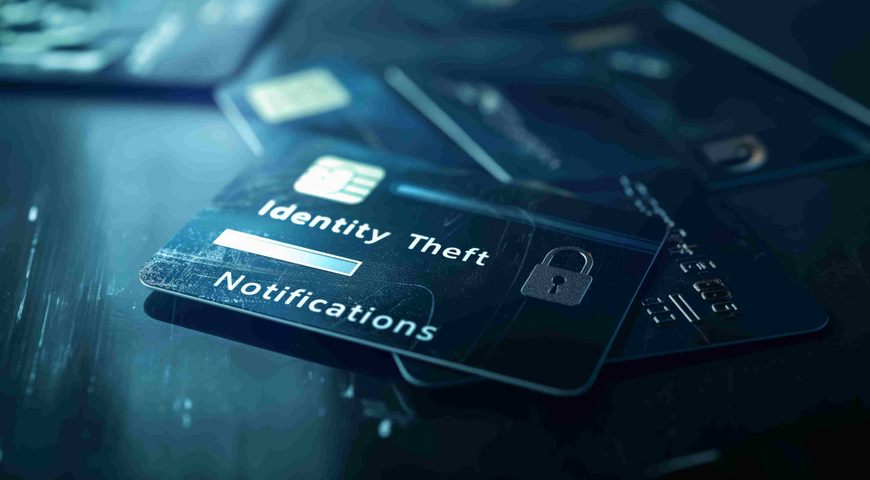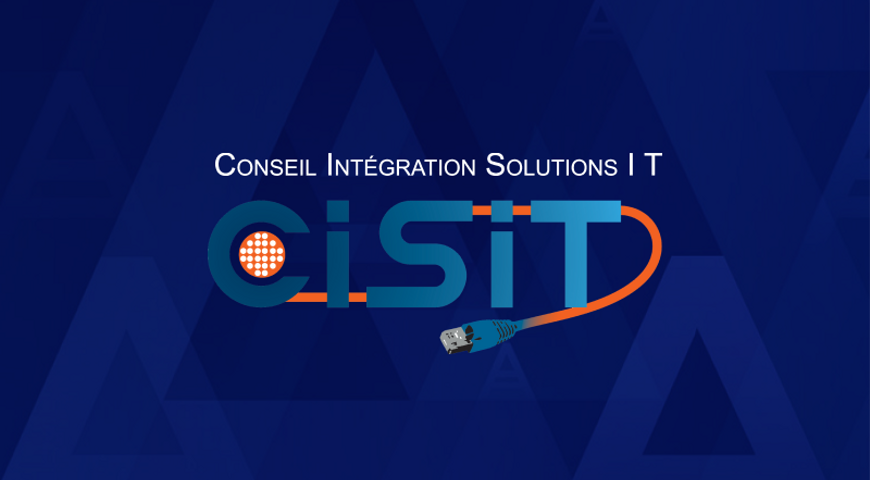
Your identity is one of your most valuable assets — yet it is also one of the most vulnerable. In 2024, identity theft surged, with 842,000 cases* reported in just the first nine months, pushing it to exceed 2023’s numbers. The financial impact is devastating, with identity theft losses hitting $23 billion in 2023 and data breaches reaching a record 3,205 incidents the same year**. Americans aged 30 to 39 are the most targeted, making up 29% of all reports, but no one is immune to the risk of falling victim to an identity theft attack.
Your personal information is constantly at risk, but there are ways to minimize the chance of waking up one morning to find your bank accounts drained and your credit cards maxed out. Protecting yourself doesn’t have to be complicated. By equipping yourself with the right identity theft protection service, you can monitor your data, detect fraud early, and recover faster if the worst happens—reducing the damage and the stress of an identity theft attack.
This article will educate you about the latest trends in identity theft threats and provide valuable insights into solutions that help you stay one step ahead of cybercriminals. From understanding how identity theft works to choosing the best protection plan, you’ll find everything you need to safeguard your digital identity.
What is identity theft?
Hackers exploit software vulnerabilities to get access to your sensitive information and documents (bank account number, driver's license, or passport), which results in damaged credit scores, out-of-pocket expenses, and a lengthy identity recovery process.
Types of identity theft
There are several types of identity theft, so it is important to understand how they can harm you. Unfortunately, they are equally destructive for your personal life, targeting sensitive information stored across various online platforms (Facebook, Instagram, X, TikTok, etc.), documents, emails and your database.
Let's explore these digital threats in detail to understand how they work and help you protect your digital identity from falling into cybercriminals' hands.
Financial identity theft
This form of cybercrime occurs when hackers exploit stolen online credentials to access financial accounts and payment systems. These attacks typically originate from data breaches, phishing attacks or credentials sold on dark web marketplaces.
Social security number identity theft
Identity thieves obtain social security numbers through data breaches, keyloggers and social engineering attacks. They combine SSNs with other personal identifiers (birth dates, addresses, and employment history) from multiple sources to create complete identity packages.
Consequently, cybercriminals use the stolen personal information to apply for credit cards and loans, which can position you in a difficult financial situation. Their primary targets include banking services, payday loans and other high-risk products that offer quick access to funds with minimal verification.
Medical identity theft
Hackers are breaching healthcare portals and patient databases and records to steal the victims' medically sensitive information. They frequently use this identity theft attack for insurance fraud, unauthorized medical billing, prescription drug schemes or submitting false insurance claims.
Synthetic digital identity theft
It is safe to say that this is one of the most sophisticated forms of cybercrime today, where hackers create new digital identities combining stolen and fabricated information. In this type of attack, cybercriminals use a different approach; they rely on strategic credit building and small initial transactions to establish credibility before executing larger fraudulent schemes.
Child identity theft
Cybercriminals target children's digital identities because their online presence typically remains unchecked until adulthood. They steal information stored in school databases or family accounts to create fraudulent online profiles and accounts in children's names.
Tax identity theft
Tax identity theft occurs when cybercriminals file fraudulent tax returns using your personal information.
Criminal identity theft
Criminal identity theft is when someone pretends to be another person by using his personal information during an arrest, for example, to avoid a summons, pay fees or prevent the discovery of a warrant issued in their real name.
How cybercriminals steal your identity
Cybercriminals use a variety of tactics and approaches to trick users into providing sensitive personal information, which they will later use to gain financial benefits. If you're wondering how exactly cybercriminals can steal your identity, here is the answer:
Phishing and social engineering
Phishing attacks involve fraudulent emails, texts, or calls that appear to come from trusted sources like banks or government agencies. In fact, they are not, and their purpose is to trick you into clicking on malicious links or sharing your personal info like passwords, Social Security numbers, names, addresses, phone numbers, and much more.
Social engineering takes it a step further since these attacks exploit human psychology to manipulate you into revealing your confidential data. Whether someone is pretending to be a tech support agent, a colleague in need, or a delivery company that needs additional info for receiving your order, these scams rely on trust and urgency, with the main purpose of getting your personal information exposed.
Data breaches and hacking
Even if you are a tech-savvy person who is aware of how cyberattacks work, your data can still be compromised through large-scale breaches. Nowadays, hackers target businesses, governments and different organizations because, through them, they can access databases with tons of personal information related to thousands of individuals.
Once they break into the company’s system, they can steal your sensitive information without your knowledge and without having to trick you or make you do anything; they will get access to credit card details, email addresses, names, addresses and other sensitive data. As a result, hackers sell the stolen data on the dark web for use in fraud, identity theft, and other cyberattacks.
Stolen physical documents
While much of identity theft happens online, old-school methods are still in play. Criminals can steal physical documents like mail, bank statements or even your wallet to gather personal information. If these documents fall into the wrong hands, your exposed personal information can bring you serious financial and mental headaches.
Identity theft protection services: What they offer
Have you wondered why identity theft experts recommend professional monitoring services when free credit reports exist? The answer is more than clear because they are much more effective at protecting you against identity theft and helping restore your identity if the worst happens. Now, let's explore what these solutions offer and how they protect you.
Core features of identity theft protection services
Identity theft protection services work by scanning thousands of data points across credit bureaus, financial records, public documents, and online databases. Through the usage of advanced algorithms, suspicious patterns are detected before major damage occurs. Furthermore, smart monitoring systems track credit applications, your bank account changes, and address updates continuously.
Identity monitoring vs. credit monitoring: What's the difference?
Credit monitoring focuses specifically on your credit files at the three major credit bureaus (Equifax, Experian, and TransUnion). This service tracks changes in your credit reports, including new account openings and balance changes. You will immediately receive an alert when someone tries to apply for credit using your information.
Identity monitoring provides broader protection by closely monitoring your personal information beyond just credit activity. This service scans dark web forums and marketplaces, public records, social media accounts, and financial databases to detect misuse of your:
- Social security number.
- Bank account numbers.
- Email addresses.
- Medical ID numbers.
- Passport information.
- Driver's license details.
- Tax return filings.
- Court records.
- Address changes.
- Phone numbers.
Think of credit monitoring as a security camera focused only on your credit activity, while identity monitoring acts as a multifunctional system that protects your entire digital identity.
Equipping yourself with both creates a strong and reliable protection for your sensitive information that is able to significantly reduce the chance of falling victim to identity theft attacks.
Real-time alerts and notifications
Would you notice if someone opened a credit card in your name at 3 AM? No, of course, but real-time alerts can inform you immediately about such cases. When any suspicious activity occurs, you will receive instant notifications through text messages or emails flagging:
- New credit applications.
- Changes to your bank accounts.
- Address update attempts.
- Suspicious charges.
- Credit score changes.
- Investment account access.
- Medical benefits claims.
- Tax return filings.
Quick response time matters — the faster you spot identity theft, the easier it becomes to prevent financial damage.
Dark web surveillance
Have you ever wondered where stolen identities end up? The dark web serves as a marketplace where cybercriminals trade compromised personal data. This hidden network hosts forums and marketplaces selling credit card numbers, Social Security details, and complete identity packages. Protection services deploy multi-layered defenses, including:
- AI-powered scanning across financial networks.
- Three bureau credit monitoring.
- Real-time credit file review.
- Dark web credential tracking.
- Tax fraud detection.
- Social media monitoring.
- Investment account alerts.
- Court record surveillance.
- Address change detection.
- Bank account tracking.
Professional dark web monitoring provides an essential early warning system, helping you respond to data breaches before criminals can exploit your personal information, preventing financial losses and efficiently protecting your digital identity.
How identity theft protection works
As we already know the importance of being equipped with identity theft protection services, now it is time to understand how the process works:
- Monitoring your data
Identity theft solutions continuously scan the dark web and public records for your personal information, including your social security number, bank accounts, credit cards, online accounts and even medical records, providing robust privacy protection.
- Detecting fraud
Monitoring services use real-time alerts to flag any suspicious activity and notify you instantly. For example, if someone tries to open a credit card in your name or your Social Security number appears on a dark web marketplace, the system detects it immediately. Credit monitoring tools closely scan your credit reports to detect any changes that could potentially indicate fraud.
- Taking action
If fraud is confirmed, identity theft protection services offer expert guidance through the entire resolutions process, including placing fraud alerts on your credit reports, freezing your accounts, or helping you file reports with law enforcement. The best solutions will even connect you with experts who will handle the legwork for you.
- Preventing future threats
Finally, these services offer tools to strengthen your defenses, such as secure password managers, VPNs and tips to avoid phishing scams.
Key features to look for in the best identity theft protection service
Nowadays, the countless cyberthreats you can face daily demand reliable, effective, and robust identity protection solutions to prevent potentially devastating scenarios. To help you select a service that provides everything needed to safeguard your privacy with confidence, look for these essential features:
Credit report and score monitoring
A robust identity theft protection service must offer continuous credit monitoring across all three credit bureaus (Equifax, Experian, and TransUnion). Why does this matter? Because even a slight alteration in your credit score or the appearance of an unfamiliar account on your report could potentially indicate fraud. Look for services that provide real-time alerts and regular updates to keep you in the loop.
Social security number (SSN) tracking
Your SSN holds the key to your identity; if it is misused, it can lead to devastating consequences for your life. The best identity protection solutions track your SSN across dark web marketplaces and public records.
Bank account and credit card monitoring
Cybercriminals can not only drain your existing bank accounts and credit cards; they are capable of opening new ones in your name, of course, without your knowledge. For that reason, it is absolutely mandatory to look for a solution that monitors your bank accounts and credit cards for suspicious transactions. Whether it is an unauthorized purchase or an unusual withdrawal, timely alerts can help you act before things get out of control.
Public records and address change alerts
Did you know hackers sometimes change your home address to divert your mail and steal sensitive information? A top-tier identity protector will monitor for such changes in the public records, court records, or even attempts to take out loans in your name.
Identity restoration assistance
Even with the best protection, identity theft attacks can still affect you. Should the worst occur and you become a victim of cybercriminals, you will undoubtedly require the support of a team of experts. Look for vendors that offer identity restoration assistance 24/7, including experts who can guide you through the entire recovery process, from filling out police reports to disputing fraudulent charges, saving you countless hours of stress and frustration.
Identity theft insurance and reimbursement policies
ID theft insurance is a core feature to look for because it helps you recover stolen funds, legal fees, and even lost wages due to identity theft. Keep in mind that the policy insurance coverage typically ranges from $1 million to $2 million, but always read the fine print to understand what is included in them. Your identity is priceless. Protect it like your life depends on it — because in many ways, it does.
Top-rated identity theft protection services
With cyberthreats on the rise, finding the right solution can mean the difference between keeping your personal information safe and experiencing the unpleasant feeling of falling victim to identity theft. That’s why we’ve carefully reviewed some of the top identity theft protection services available.
Our goal? To help you make an informed decision and choose the best option to safeguard what matters most — your identity, finances and peace of mind. Let’s explore the details and find the right protection for you.
Acronis True Image
Acronis True Image isn’t just an identity theft protection service — it’s a comprehensive cyber protection solution capable of delivering outstanding cybersecurity protection that will keep cybercriminals away from your invaluable database and personal information.
- All-in-one protection: Combines identity theft protection, active ransomware protection, secure backup, and encrypted cloud storage in one intuitive platform.
- Family coverage: Protects not just you but your entire family, ensuring everyone’s digital safety.
- Real-time monitoring: Constantly scans the internet for suspicious activities involving your sensitive information and alerts you via email or text.
- $1 million identity fraud insurance: Provides financial peace of mind in case of identity theft.
- 24/7 resolution services: Expert support is always available to help restore your identity and minimize damage.
- User-friendly interface: It’s easy to set up and manage, even for non-tech-savvy users.
- Flexible pricing plans: Acronis True Image offers plans tailored to your needs, whether protecting 1, 3 or 5 computers and requiring cloud storage ranging from 50 GB to 5 TB. This ensures you only pay for what you need while enjoying top-tier protection.
Norton LifeLock
- Pros: Strong reputation, extensive monitoring and a wide range of plans.
- Cons: Can be pricey for full-featured plans, and the interface isn’t as intuitive as it should be.
- Pricing: Starts at $11.99/month for basic identity theft protection.
IdentityForce
- Pros: Excellent monitoring capabilities, including social media and dark web surveillance.
- Cons: Higher pricing tiers can be expensive, and it lacks backup and ransomware protection.
- Pricing: Starts at $19.99/month for individuals.
Experian IdentityWorks
- Pros: Experian Credit lock feature, credit score monitoring, and fraud resolution services.
- Cons: Limited to credit-related protection and no backup or ransomware features.
- Pricing: Starts at $24.99/month for basic credit monitoring.
Aura
- Pros: Comprehensive monitoring, VPN included, and family plans available.
- Cons: No backup or ransomware protection, and the interface can feel cluttered.
- Pricing: Starts at $12/month.
The cost of identity theft protection: is it worth it?
When it comes to safeguarding your personal information, one question always arises: Is paying for identity theft protection worth the investment? The answer is yes! Today, ID theft cases have skyrocketed, so equipping yourself with reliable and effective identity protection solutions is a must.
To help you understand the value of these services, we will explore in detail pricing models, weigh the costs against the benefits, and consider whether you can achieve similar protection on your own.
Pricing models and subscription plans
There is a saying that there is no such thing as a free lunch; the best identity protection solutions operate on a subscription basis, with monthly or annual plans. Costs vary widely depending on the provider, the features provided, and the level of insurance coverage. After deep research, we have found that basic plans might start at around $10-$15 per month, offering essential monitoring and alerts.
On the other hand, the more advanced solutions, which offer additional features such as credit score tracking, insurance coverage, and family plans, can cost you $25–$50 or more per month. But what exactly are you paying for, and does the price justify the peace of mind? We advise you to invest in identity theft protection services, as they can be crucial in preparing for unforeseen circumstances.
Cost vs. benefits
The real value lies in the breadth of protection these services provide you with; for a relatively small monthly subscription, you will be provided with tools that continuously monitor for potential frauds and even help you recover from the devastating identity theft consequences. Consider the time and stress involved in restoring ID theft on your own—countless hours spent on the phone, paperwork, expenses for experts helping you through the process, and the overall potential losses.
Keep in mind that identity theft protection services cost less than 1% of potential identity theft losses. What would you choose: to stay awake at night wondering what if tomorrow I become a victim of such an attack, or to sleep with peace of mind knowing that your digital identity is protected, and even if disaster happens, you will minimize the financial losses and save time and headaches through the restoration process?
Can you protect yourself without paying for a service?
Actually, it is possible to educate yourself and take steps on how to protect your identity independently, but it will definitely require significant effort and time from your side. Imagine regularly checking your credit reports, setting up fraud alerts, and monitoring your accounts. How does that sound?
Today, we are all overwhelmed with countless daily tasks. Can you spend an additional one to two hours per day on these activities? Even if you decide to do it, these methods lack the automation and additional security features that professional services can offer you.
For instance, dark web monitoring and real-time alerts are almost impossible to replicate on your own. If you value convenience, advanced tools, and expert support, investing in identity theft protection would be a smart move. On the other hand, if you are confident in your abilities to stay constantly proactive, you might opt for a DIY approach.
DIY identity theft protection: Best practices
We will now look at the best practices that will help you strengthen your ID protection to keep you one step ahead of cybercriminals.
Securing personal information online and offline
It is mandatory to store physical documents like social security cards, passports and financial statements in a locked drawer or a place that is hard to find. For digital files, always use encrypted storage space and avoid saving passwords or any account details in easily accessible locations. Never save your passwords on your computer, except if you have a password manager.
Strengthening passwords and using multi-factor authentication
Don't be the person who uses weak passwords; create strong, unique ones for every account, combining upper and lower letters, numbers and special symbols. Better yet, use a password manager to generate and store them securely.
Adding multi-factor authentication (MFA) will provide an extra layer of protection, requiring a second form of verification when accessing your accounts, like a fingerprint or one-time code. Why make it easy for cybercriminals when you can make it nearly impossible to steal your sensitive information?
Monitoring bank and credit card statements
Regularly reviewing your financial statements is a simple yet effective way to catch suspicious activity early. Look for unfamiliar charges, even small ones, as they can be a sign of testing before larger fraud occurs. Many banks offer mobile transaction alerts, giving you real-time updates on account activity. Staying vigilant here can save you from significant headaches down the line.
Placing fraud alerts and credit freezes
If you suspect your information has been compromised, placing a fraud alert on your credit report can help. This requires lenders to verify your identity before opening new accounts in your name. For even stronger protection, consider a credit freeze, which locks access to your credit report entirely. While lifting the freeze when needed may require more effort, the added security is often worth it.
What should you do if you become a victim of identity theft?
If the nightmare of discovering that your identity has been stolen becomes a reality, quick actions can minimize the financial damages. There are a few things that must be done immediately to help you regain control and protect yourself from further harm:
Immediate steps to take after identity theft
The moment you suspect fraud, instantly contact your bank and credit card companies to freeze or close compromised accounts. Next, change every single password for your online accounts, especially those linked to financial or personal data. It is highly recommended to gather any evidence of the theft, such as suspicious emails or unauthorized transactions, as the information will be useful when reporting the crime.
Report identity theft to authorities
You must file a report with your local police department to create an official record of the incident. Next, report the theft to the Federal Trade Commission (FTC) at IdentityTheft.gov. This platform provides a recovery plan and generates an official report you can share with creditors. Afterwards, you must immediately notify credit bureaus to place a fraud alert on your file, making it harder for cybercriminals to open new accounts in your name.
Recovering from identity theft
Once immediate threats are addressed, it is time to focus on repairing the damage they caused. Dispute fraudulent charges with creditors and request corrections to your credit report. Remember that you must continue monitoring accounts and credit reports regularly to ensure that no further issues arise.
FAQs
Is identity theft protection really necessary?
Yes, it is. With cybercrimes on the rise, protecting your personal information has never been more important. While no service can guarantee complete immunity, identity theft protection will equip you with tools to detect and respond to threats quickly.
How effective are identity theft protection services?
These services excel at early detection and rapid response. By constantly monitoring your credit reports, scanning the dark web, and sending real-time alerts, they will help you identify fraud before it escalates. However, remember that their effectiveness depends on how quickly you act on the alerts provided.
Can I get my money back if I become a victim of identity theft?
Recovering lost funds depends on the type of fraud and how quickly you report it. Many banks and credit card companies offer zero-liability policies for unauthorized transactions, meaning you won’t be held responsible. However, recovering from identity theft often involves significant time and effort, which is why prevention is always better than cure.
How often should I check my credit report?
Reviewing your credit report at least once a year is a good starting point, but more frequent checks can help you spot issues sooner. Under federal law, you’re entitled to a free report from each of the three major credit bureaus annually. For added security, consider staggering these requests and checking one report every four months.
What should I do if my personal information was exposed in a data breach?
Start by immediately changing passwords for any affected accounts. Enable multi-factor authentication wherever possible to add an extra layer of security. Monitor your financial statements closely for unusual activity and consider placing a fraud alert on your credit file. If the breach involved sensitive data like your Social Security number, a credit freeze might be a wise precaution.
By staying informed and proactive, you can significantly reduce the risks associated with identity theft. Whether you choose a professional service or take a DIY approach, the key is to act swiftly and stay vigilant. Your personal information is valuable—treat it that way.
Conclusion
Investing in identity protection services is a wise choice in a world where cyberattacks are rapidly growing and can cause significant harm to your life. Being equipped with reliable, effective identity protection is a blessing because it minimizes the chance of experiencing ID theft. Even if you fall victim to such an attack, you can restore your identity much more easily and with minimal financial losses.
A wise person understands that the cost of using identity protection services is equivalent to just 1% of the potential losses from a successful identity theft. Most people today still do not understand the importance of protecting their digital identity and those of their family members, inadvertently helping cybercriminals grow their list of victims by hundreds, if not thousands, of people daily.
Taking care of your digital safety is as important as taking care of your health. Nowadays, our digital world is like a battlefield where only prepared individuals survive. We must accept the fact that being online today is like being in a war — if you don’t take care of yourself, no one else will.
Acronis True Image offers one of the best identity theft protection solutions on the market. It constantly monitors the internet for suspicious activities related to your sensitive information. Combined with its active ransomware protection, resolution services, cyber insurance, and secure backup capabilities, it truly stands out as the perfect choice for your digital life. This all-in-one solution provides everything you need to equip yourself with complete cyber protection.
If you want to take care of yourself and your family, Acronis True Image is the answer to all your needs and questions, ensuring a more secure and peaceful future. At the end of the day, we all want peace of mind, knowing that our digital world is safeguarded. Instead of waiting for a disaster to strike, take proactive steps and join the Acronis family. We assure you that you won’t regret it for a second.
Upgrade your cyber security - Get your identity protected today!
About Acronis
A Swiss company founded in Singapore in 2003, Acronis has 15 offices worldwide and employees in 50+ countries. Acronis Cyber Protect Cloud is available in 26 languages in 150 countries and is used by over 21,000 service providers to protect over 750,000 businesses.




